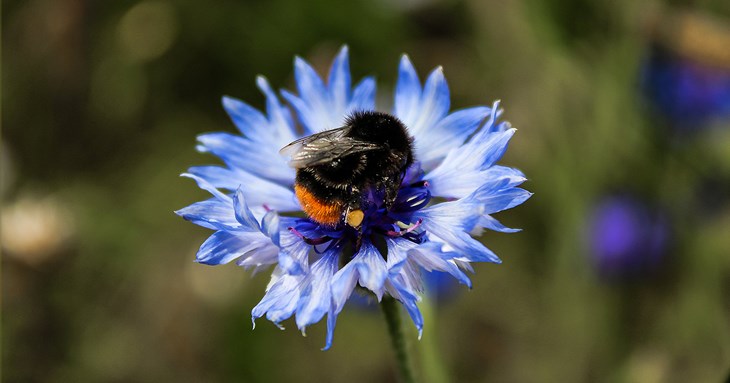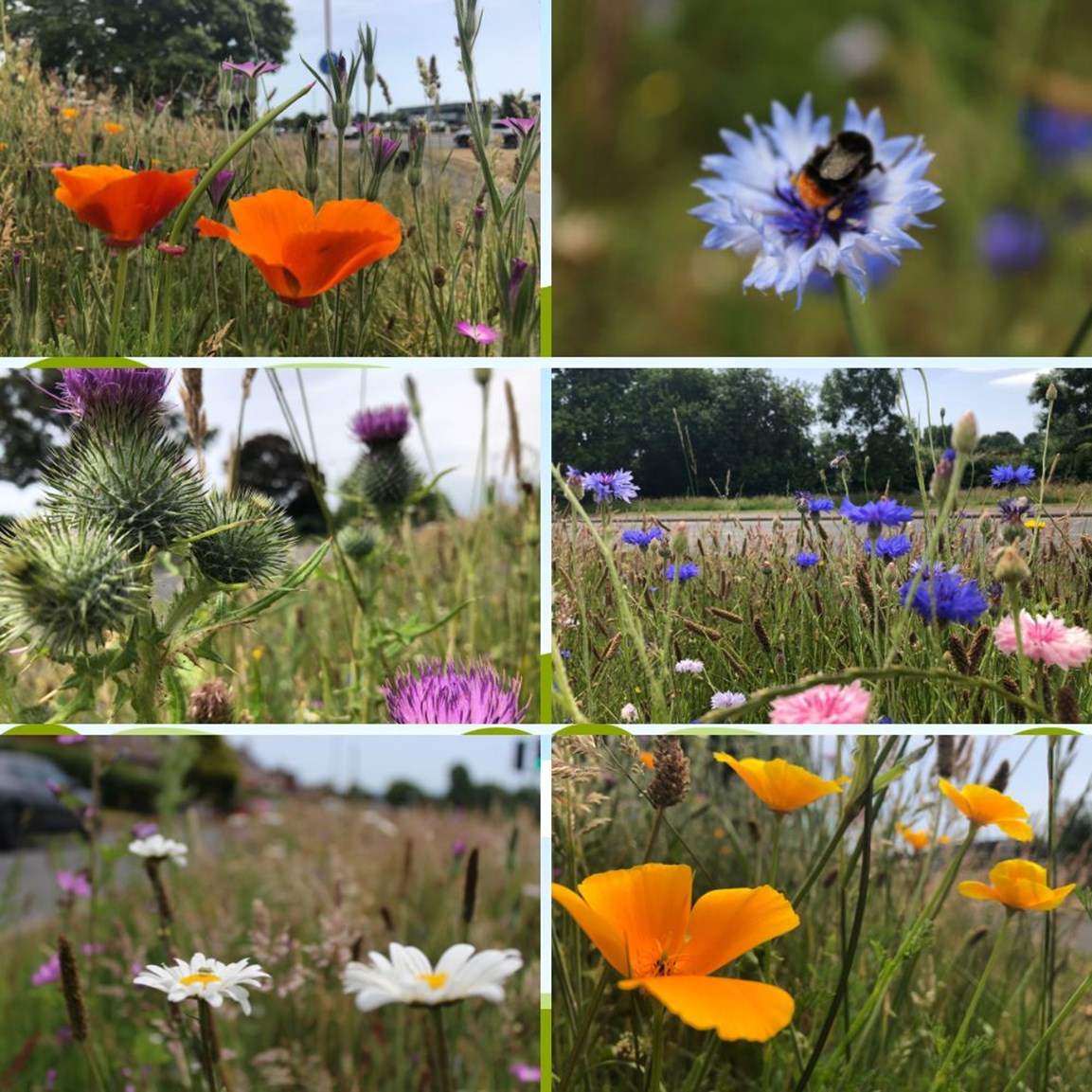Wildflowers start to bloom in Exeter
Published: 16 June 2022

Colourful displays of wildflowers are starting to dominate Exeter’s roadside verges, roundabouts and various patches of land in the city.
The June blooms follow the sowing of wild flower seeds throughout the city as part of the Wild City project.
Wild City – now over ten years old - sees Exeter City Council work closely with Devon Wildlife Trust to encourage nature into the city.
Not only are the impressive displays of colour beautiful to look at, they also attract a wide variety of insects and pollinators. The Council captured these colourful displays in Prince Charles Road.
Over recent years the wild flower displays have proved popular with residents and visitors alike.
Initially the Council chose 32 sites. Community groups and schools were involved in the planting. This year new areas along Topsham Road have been added to the wildflower programme.
At the end of each year, the wildflower beds are left to naturally form seed to fall onto the land and create a wildflower seed bank to start the process again the following year.
Often this takes time to become self-generating and most years the Council has to add to the seed bank to keep it thriving. It uses a mixture of annuals, perennials and native species of seed.
This year the Council is trialling more sustainable methods of seeding and preparation as well as different seed mixes in order to create better habitats and food sources. This may mean in certain places that displays aren’t as colourful as previous years but these methods are better for biodiversity.
The initiative means that not so much grass across the city needs to be cut, saving money and allowing a better standard of grass cutting elsewhere where it needs to be cut.
Stephen Hussey, of Devon Wildlife Trust, said: “This is good for people and for wildlife. The flowers provide nectar sources for the city’s insect populations. Moths, butterflies and beetles all use these wild flower patches. Together they also help to link other green spaces across the city such as the Valley Parks, gardens and allotments. This helping to give nature a home in Exeter.”
Devon Wildlife Trust are currently organising volunteer monitoring of the areas. To get involved in creating a nature corridor in Topsham Road visit the Devon Wildlife Trust website https://www.devonwildlifetrust.org/what-we-do/our-projects/exeter-wild-city

